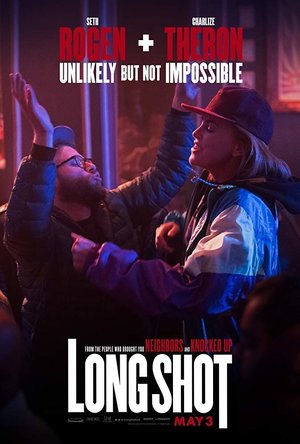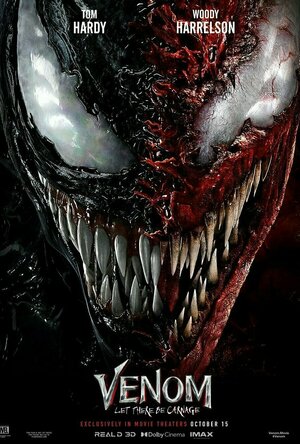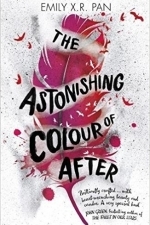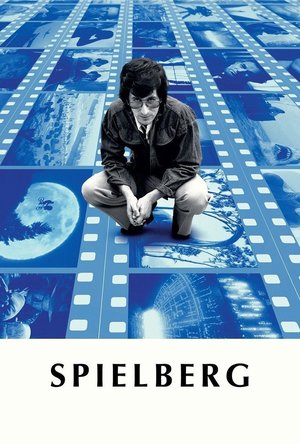Search
Search results

All Islamic Audio Stories Muslims Free
Book and Lifestyle
App
Get the largest collection of free All Islamic audio stories Muslims for your phone or tablet. Read...
Bob Mann (459 KP) rated Saint Maud (2020) in Movies
Oct 6, 2020
Morfydd Clark - astonishingly good as Maud (1 more)
Expert pacing from debut director Rose Glass
"My Little Saviour": Astonishing Saint Maud delivers psycho-religious chills
Saint Maud is the debut feature from writer/director Rose Glass, and it packs a punch. The film was first seen at last year's London Film Festival, but was due for broader nationwide release soon. What a crushing disappointment it must be for Ms Glass that so few people will likely get to see it in the current climate... at least, not for a while. Since it is an effective little chiller.
Maud (Morfydd Clark) is a palliative nurse looking after ex-choreographer Amanda (Jennifer Ehle). Maud is extremely religious and feels God move in her... regularly. Acting on His guidance, Maud sets out to save the soul of her ailing bohemian charge. But is Amanda beyond reach, and how will the zealot-like Maud react to that rejection?
Morfydd Clark appears so young in this film that you would think this was her debut film. But she's actually 30 years old and has quite an impressive filmography already. Although this is her movie-lead debut, she's had a substantial part alongside Kate Beckinsale in the excellent "Love and Friendship" and smaller parts in "Crawl", "The Personal History of David Copperfield" and the fun "Pride and Prejudice and Zombies". She's likely to get more worldwide exposure soon as a young Galadriel in Amazon's new version of "Lord of the Rings".
As Maud she is simply superb - expressing such a range of joy, hurt and despair that you must think a BAFTA Rising Star nomination should be on the cards.
Clark is ably supported in the leading role by the splendid Jennifer Ehle, still so memorable to me as Elizabeth Bennett from the BBC's "Pride and Prejudice".
Scarborough is also a star of "Saint Maud". The Yorkshire seaside town is another star of the movie. Clearly filmed before lockdown, the rainy and windswept resort looks bleak and unwelcoming. And that's before Covid! Many of those struggling bars and amusement centres, as in other resorts all around the UK, are now on their last legs.
Adam Janota Bzowski supplies the impressively claustrophobic music, which deserves recognition. A scene with Maud, flicking a lighter rhythmically in time with the sonorous beat, is a masterpiece in musical choreography and editing (by Mark Towns).
At the heart of this horror-thriller is whether, following a Dawkins-style argument, fervent religious followers are less insightfully correct and more mentally unstable and misguided. When is the voice of God just the voice in your head? And how would you tell the difference anyway? Piecing together the plot and motivations of Maud was intellectually challenging and rewarding.
I always get a little tense and nervous when I see the word "horror" on a movie bill. I am NOT a great horror fan! But for me, as a 'horror movie', "Saint Maud" is of the 'horror-lite' variety. Highly watchable, it builds more in the way of creeping dread than cheap shocks. There were only a couple of jump-scares (but for me, the one in the finale was a doozy!).
A BBC interview with Rose Glass I just saw says she relates Maud's relationship with God as like many people's relationship with social media. Always looking for support, guidance and affirmation. Interesting.
This is also an obviously female-led picture. All the men are complete tools. no, really, literally they are. It makes me feel ashamed to be among their number.
Overall, "Saint Maud" is a minor classic. I didn't go in with great expectations of this one, but I was pleasantly surprised. As a small British movie, it packs a punch significantly above its weight. When I came out I was at about a 7* rating. But this is one that really stayed with me, and I've subconsciously thought about little else all day. So for that reason I am going to escalate my rating to something more appropriate.
You might struggle now to see it on the big screen, but if you can do so, it comes with a recommendation from me. I think this one could REALLY be a "Marmite film".... so if you see it, let me know what you thought with a comment on One Mann's Movies here https://rb.gy/9k93ck . (Thanks).
Maud (Morfydd Clark) is a palliative nurse looking after ex-choreographer Amanda (Jennifer Ehle). Maud is extremely religious and feels God move in her... regularly. Acting on His guidance, Maud sets out to save the soul of her ailing bohemian charge. But is Amanda beyond reach, and how will the zealot-like Maud react to that rejection?
Morfydd Clark appears so young in this film that you would think this was her debut film. But she's actually 30 years old and has quite an impressive filmography already. Although this is her movie-lead debut, she's had a substantial part alongside Kate Beckinsale in the excellent "Love and Friendship" and smaller parts in "Crawl", "The Personal History of David Copperfield" and the fun "Pride and Prejudice and Zombies". She's likely to get more worldwide exposure soon as a young Galadriel in Amazon's new version of "Lord of the Rings".
As Maud she is simply superb - expressing such a range of joy, hurt and despair that you must think a BAFTA Rising Star nomination should be on the cards.
Clark is ably supported in the leading role by the splendid Jennifer Ehle, still so memorable to me as Elizabeth Bennett from the BBC's "Pride and Prejudice".
Scarborough is also a star of "Saint Maud". The Yorkshire seaside town is another star of the movie. Clearly filmed before lockdown, the rainy and windswept resort looks bleak and unwelcoming. And that's before Covid! Many of those struggling bars and amusement centres, as in other resorts all around the UK, are now on their last legs.
Adam Janota Bzowski supplies the impressively claustrophobic music, which deserves recognition. A scene with Maud, flicking a lighter rhythmically in time with the sonorous beat, is a masterpiece in musical choreography and editing (by Mark Towns).
At the heart of this horror-thriller is whether, following a Dawkins-style argument, fervent religious followers are less insightfully correct and more mentally unstable and misguided. When is the voice of God just the voice in your head? And how would you tell the difference anyway? Piecing together the plot and motivations of Maud was intellectually challenging and rewarding.
I always get a little tense and nervous when I see the word "horror" on a movie bill. I am NOT a great horror fan! But for me, as a 'horror movie', "Saint Maud" is of the 'horror-lite' variety. Highly watchable, it builds more in the way of creeping dread than cheap shocks. There were only a couple of jump-scares (but for me, the one in the finale was a doozy!).
A BBC interview with Rose Glass I just saw says she relates Maud's relationship with God as like many people's relationship with social media. Always looking for support, guidance and affirmation. Interesting.
This is also an obviously female-led picture. All the men are complete tools. no, really, literally they are. It makes me feel ashamed to be among their number.
Overall, "Saint Maud" is a minor classic. I didn't go in with great expectations of this one, but I was pleasantly surprised. As a small British movie, it packs a punch significantly above its weight. When I came out I was at about a 7* rating. But this is one that really stayed with me, and I've subconsciously thought about little else all day. So for that reason I am going to escalate my rating to something more appropriate.
You might struggle now to see it on the big screen, but if you can do so, it comes with a recommendation from me. I think this one could REALLY be a "Marmite film".... so if you see it, let me know what you thought with a comment on One Mann's Movies here https://rb.gy/9k93ck . (Thanks).
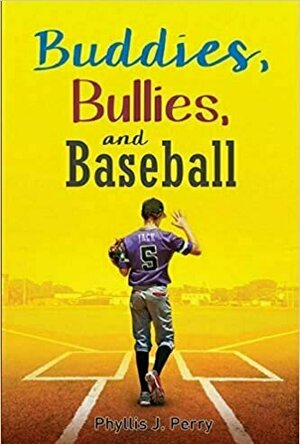
Buddies, Bullies, and Baseball
Book
When Bullies Act Out, It’s Time for Buddies and Baseball A cloud hangs over Jack as he begins...
Bob Mann (459 KP) rated Long Shot (2019) in Movies
Sep 28, 2021
#Punching.
#Punching refers to an in-family joke….. my WhatsApp reply to my son when he sent me a picture of his new “Brazilian supermodel girlfriend” (she’s not). Bronwyn is now my daughter-in-law!
Similarly, the ‘out-there’ journalist Fred Flarsky (Seth Rogan) has been holding a candle for the glacial ice-queen Charlotte Field (Charlize Theron) for nearly twenty years. At the age of 16 she was his babysitter. Always with an interest in school issues, she has now risen to the dizzy heights of secretary (“of State”) to the President of the United States (Bob Odenkirk). With Charlotte getting the opportunity to run for President, fate arranges for Fred to get hired as a speechwriter on the team to help inject some necessary humour into Charlotte’s icy public persona. But in terms of romantic options, the shell-suited Fred is surely #punching isn’t he?
A rare thing.
Getting the balance right for a “romantic comedy” is a tricky job, but “Long Shot” just about gets it spot on. The comedy is sharp with a whole heap of great lines, some of which will need a second watch to catch. It’s also pleasingly politically incorrect, with US news anchors in particular being lampooned for their appallingly sexist language.
Just occasionally, the humour flips into Farrelly-levels of dubious taste (one “Mary-style” incident in particular was, for me, very funny but might test some viewer’s “ugh” button). The film also earns its UK15 certificate from the extensive array of “F” words utilized, and for some casual drug use.
Romantically, the film harks back to a classic blockbuster of 1990, but is well done and touching.
Writing and Directing
The sharp and tight screenplay was written by Dan Sterling, who wrote the internationally controversial Seth Rogen/James Franco comedy “The Interview” from 2014, and Liz Hannah, whose movie screenplay debut was the Spielberg drama “The Post“.
Behind the camera is Jonathan Levine, who previously directed the pretty awful “Snatched” from 2017 (a film I have started watching on a plane but never finished) but on the flip side he has on his bio the interesting rom-com-zombie film “Warm Bodies” and the moving cancer comedy “50:50”, also with Rogan, from 2011.
Also worthy of note in the technical department is the cinematography by Yves Bélanger (“The Mule“, “Brooklyn“, “Dallas Buyers Club“) with some lovely angles and tracking shots (a kitchen dance scene has an impressively leisurely track-away).
The Cast
Seth Rogen is a bit of an acquired taste: he’s like the US version of Johnny Vegas. Here he is suitably geeky when he needs to be, but has the range to make some of the pathos work in the inevitable “downer” scenes. Theron is absolutely gorgeous on-screen (although unlike the US anchors I OBVIOUSLY also appreciate her style and acting ability!). She really is the Grace Kelly of the modern age. She’s no stranger to comedy, having been in the other Seth (Macfarlane)’s “A Million Ways to Die in the West“. But she seems to be more comfortable with this material, and again gets the mix of comedy, romance and drama spot-on.
The strong supporting cast includes the unknown (to me) June Diane Raphael who is very effective at the cock-blocking Maggie, Charlotte’s aide; O’Shea Jackson Jr. as Fred’s buddy Lance; and Ravi Patel as the staffer Tom.
But winning the prize for the most unrecognizable cast member was Andy Serkis as the wizened old Rupert Murdoch-style media tycoon Parker Wembley: I genuinely got a shock as the titles rolled that this was him.
Final thoughts.
Although possibly causing offence to some, this is a fine example of a US comedy that delivers consistent laughs. Most of the audience chatter coming out of the screening was positive. At just over 2 hours, it breaks my “90 minute comedy” rule, but just about gets away with it. It’s not quite for me at the bar of “Game Night“, but it’s pretty close. Recommended.
#Punching refers to an in-family joke….. my WhatsApp reply to my son when he sent me a picture of his new “Brazilian supermodel girlfriend” (she’s not). Bronwyn is now my daughter-in-law!
Similarly, the ‘out-there’ journalist Fred Flarsky (Seth Rogan) has been holding a candle for the glacial ice-queen Charlotte Field (Charlize Theron) for nearly twenty years. At the age of 16 she was his babysitter. Always with an interest in school issues, she has now risen to the dizzy heights of secretary (“of State”) to the President of the United States (Bob Odenkirk). With Charlotte getting the opportunity to run for President, fate arranges for Fred to get hired as a speechwriter on the team to help inject some necessary humour into Charlotte’s icy public persona. But in terms of romantic options, the shell-suited Fred is surely #punching isn’t he?
A rare thing.
Getting the balance right for a “romantic comedy” is a tricky job, but “Long Shot” just about gets it spot on. The comedy is sharp with a whole heap of great lines, some of which will need a second watch to catch. It’s also pleasingly politically incorrect, with US news anchors in particular being lampooned for their appallingly sexist language.
Just occasionally, the humour flips into Farrelly-levels of dubious taste (one “Mary-style” incident in particular was, for me, very funny but might test some viewer’s “ugh” button). The film also earns its UK15 certificate from the extensive array of “F” words utilized, and for some casual drug use.
Romantically, the film harks back to a classic blockbuster of 1990, but is well done and touching.
Writing and Directing
The sharp and tight screenplay was written by Dan Sterling, who wrote the internationally controversial Seth Rogen/James Franco comedy “The Interview” from 2014, and Liz Hannah, whose movie screenplay debut was the Spielberg drama “The Post“.
Behind the camera is Jonathan Levine, who previously directed the pretty awful “Snatched” from 2017 (a film I have started watching on a plane but never finished) but on the flip side he has on his bio the interesting rom-com-zombie film “Warm Bodies” and the moving cancer comedy “50:50”, also with Rogan, from 2011.
Also worthy of note in the technical department is the cinematography by Yves Bélanger (“The Mule“, “Brooklyn“, “Dallas Buyers Club“) with some lovely angles and tracking shots (a kitchen dance scene has an impressively leisurely track-away).
The Cast
Seth Rogen is a bit of an acquired taste: he’s like the US version of Johnny Vegas. Here he is suitably geeky when he needs to be, but has the range to make some of the pathos work in the inevitable “downer” scenes. Theron is absolutely gorgeous on-screen (although unlike the US anchors I OBVIOUSLY also appreciate her style and acting ability!). She really is the Grace Kelly of the modern age. She’s no stranger to comedy, having been in the other Seth (Macfarlane)’s “A Million Ways to Die in the West“. But she seems to be more comfortable with this material, and again gets the mix of comedy, romance and drama spot-on.
The strong supporting cast includes the unknown (to me) June Diane Raphael who is very effective at the cock-blocking Maggie, Charlotte’s aide; O’Shea Jackson Jr. as Fred’s buddy Lance; and Ravi Patel as the staffer Tom.
But winning the prize for the most unrecognizable cast member was Andy Serkis as the wizened old Rupert Murdoch-style media tycoon Parker Wembley: I genuinely got a shock as the titles rolled that this was him.
Final thoughts.
Although possibly causing offence to some, this is a fine example of a US comedy that delivers consistent laughs. Most of the audience chatter coming out of the screening was positive. At just over 2 hours, it breaks my “90 minute comedy” rule, but just about gets away with it. It’s not quite for me at the bar of “Game Night“, but it’s pretty close. Recommended.
Gareth von Kallenbach (980 KP) rated Venom: Let There Be Carnage (2021) in Movies
Sep 30, 2021
Venom: Let There Be Carnage Has Some Moments But Could Have Been So Much More
When audiences last saw Eddie Brock (Tom Hardy); the journalist and his parasitic symbiote Venom; had just saved the day and cemented their unusual bond with one another.
In the new film “Venom: Let There Be Carnage”; Eddie and Venom are at the end of their Honeymoon phase as Venom is lingering to be free to eat bad people and do what is natural for him. Eddie meanwhile wants a more conservative approach feeding Venom chicken and chocolate as he knows the eyes of the authorities are still upon him and he has to convince the world that Venom is dead and no longer a threat.
At the same time; serial killer Cletus Kasady (Woody Harrelson) has selected Eddie to interview him in San Quentin and the two form an unusual connection as Cletus cryptically speaks to Eddie which underlines a deeper motivation.
With the help of Venom; Eddie is able to decipher clues found on the walls of Cletus’s cell which leads authorities to several of his victims. This results in a rapid rise in status for Eddie and fast tracks Cletus for execution as his main means of leverage is now gone.
This leads to a rift where Eddie and Venom split and each has to struggle to adjust to life without one another.
At this point, the film has mainly been odd bits of whimsy between Venom and Eddie around the establishment of the plot and threat. However, things go into chaos mode when Cletus becomes infected with a Symbiote and turns into a destruction spewing death machine known as “Carnage”.
Cletus and Carnage both have their own agendas and Cletus uses Carnage to exact his revenge as well as locate a figure from his past that is as big a danger as he is.
As any fan of films of this genre knows; this scenario leads to a showdown between the central characters which are awash in abundant CGI, loud noises, and destruction. While this is not a bad thing and certainly one of the main reasons I enjoy films of this type; the film never seemed to fully click for me and as such was not as good as I thought it could have been.
In many ways, the film reminded me of how comic-based films were done before Marvel started their own studios and their phenomenal run of hits based on their work.
There have been multiple attempts to adapt comics into films over the last few decades and many of them have not lived up to expectations or failed outright. One of the biggest reasons is in my opinion is that those behind the projects were hindered by the studio, wanted to put their own spin on the material and strayed from the source; or failed to show the attributes that made the characters so appealing to fans.
What we often get is action sequences and CGI galore but without stories or characters that fully draw in the audience and fail to capture the essence of the comics.
Director Andy Serkis has done a great job with the visuals of the film but the tone seems off. The early part of the film is filled with comedic moments that are either hit or miss. Some of which was almost to the point where I wondered if it was supposed to be a parody.
The plot is fairly linear with nothing unexpected as it is simply bad guys get loose; bad guys cause death and destruction, can the heroes stop them. The climactic scene lacks any “wow” moments for me as it was mainly CGI characters rapidly moving around causing damage to one another and their environment. There was no real tension for me and the ultimate resolution seemed a bit anti-climactic.
For me the best moment of the film was a mid-credits scene that really popped as it sets up all sorts of interesting options and indicates that Venom may be about to graduate to bigger and better things.
For now; the cast is solid as is the CGI; I just wish the story was more engaging as it had the potential to be so much more.
3 stars out of 5
In the new film “Venom: Let There Be Carnage”; Eddie and Venom are at the end of their Honeymoon phase as Venom is lingering to be free to eat bad people and do what is natural for him. Eddie meanwhile wants a more conservative approach feeding Venom chicken and chocolate as he knows the eyes of the authorities are still upon him and he has to convince the world that Venom is dead and no longer a threat.
At the same time; serial killer Cletus Kasady (Woody Harrelson) has selected Eddie to interview him in San Quentin and the two form an unusual connection as Cletus cryptically speaks to Eddie which underlines a deeper motivation.
With the help of Venom; Eddie is able to decipher clues found on the walls of Cletus’s cell which leads authorities to several of his victims. This results in a rapid rise in status for Eddie and fast tracks Cletus for execution as his main means of leverage is now gone.
This leads to a rift where Eddie and Venom split and each has to struggle to adjust to life without one another.
At this point, the film has mainly been odd bits of whimsy between Venom and Eddie around the establishment of the plot and threat. However, things go into chaos mode when Cletus becomes infected with a Symbiote and turns into a destruction spewing death machine known as “Carnage”.
Cletus and Carnage both have their own agendas and Cletus uses Carnage to exact his revenge as well as locate a figure from his past that is as big a danger as he is.
As any fan of films of this genre knows; this scenario leads to a showdown between the central characters which are awash in abundant CGI, loud noises, and destruction. While this is not a bad thing and certainly one of the main reasons I enjoy films of this type; the film never seemed to fully click for me and as such was not as good as I thought it could have been.
In many ways, the film reminded me of how comic-based films were done before Marvel started their own studios and their phenomenal run of hits based on their work.
There have been multiple attempts to adapt comics into films over the last few decades and many of them have not lived up to expectations or failed outright. One of the biggest reasons is in my opinion is that those behind the projects were hindered by the studio, wanted to put their own spin on the material and strayed from the source; or failed to show the attributes that made the characters so appealing to fans.
What we often get is action sequences and CGI galore but without stories or characters that fully draw in the audience and fail to capture the essence of the comics.
Director Andy Serkis has done a great job with the visuals of the film but the tone seems off. The early part of the film is filled with comedic moments that are either hit or miss. Some of which was almost to the point where I wondered if it was supposed to be a parody.
The plot is fairly linear with nothing unexpected as it is simply bad guys get loose; bad guys cause death and destruction, can the heroes stop them. The climactic scene lacks any “wow” moments for me as it was mainly CGI characters rapidly moving around causing damage to one another and their environment. There was no real tension for me and the ultimate resolution seemed a bit anti-climactic.
For me the best moment of the film was a mid-credits scene that really popped as it sets up all sorts of interesting options and indicates that Venom may be about to graduate to bigger and better things.
For now; the cast is solid as is the CGI; I just wish the story was more engaging as it had the potential to be so much more.
3 stars out of 5
Jessica - Where the Book Ends (15 KP) rated The Astonishing Color of After in Books
Jan 30, 2019
FEELS!!!!!!!! ALL THE FEELS!!!!!!!!!! The Astonishing Color of After brought to light feelings for me that I didn’t know I was feeling. I cried tears I didn’t know I needed to cry. This book resonated with me in ways I’ve never experience before while reading. This book rebroke my heart but it also healed it in ways I couldn’t heal myself.
Let me start at the beginning… Leigh’s mother commits suicide. Her mom’s name is Dorothy and goes by Dory for short. While my mom didn’t commit suicide, she did die unexpectedly in August of 2016. I know, I know you’re thinking what does this have to do with the book but just put your patient pants on. My mom’s name was Doria, and she went by Dory. While Leigh was lucky enough to be the one that didn’t find her mom, I wasn’t lucky enough to have the same luxury. I could relate to how Leigh was feeling on so many levels. So much so, it felt like the author had interviewed me and then written the book based on that interview. Leigh feels like she is to blame partly for her mother’s death. She feels like if she would have only done x better, if only she’d been in y place at z time she would have been able to save her mom. I know because I had these same thoughts and still do until this day. After reading this book and realizing there just wasn’t anything I could have done to change the outcome of what was destined to happen. But just because my mom isn’t physically here anymore doesn’t mean she’s gone forever. I still see her in myself every time I look in the mirror. She is always with me.
The magical realism aspect of this book brought the journey and the imagery to life for me. I could picture this big beautiful red bird soaring around Leigh. The more I read of this book the more I found myself looking to the sky to see what is out there for me, and then I realized that looking to the sky is something that I’ve done since the day my mom died. I find myself looking around at the clouds and the sky seeing if there is a trace of her looking down on me. Now my favorite time to look to the sky is at night and I imagine her as one of the stars looming overhead keeping an eye on me.
The characters in this book are so real. Leigh, her grandparents, her dad, and Axel. Though, I must admit I feel as though the story could have been just as good without Axel. Sometimes he just seemed to crowd the story and take away from what was happening. I think my most favorite character was Feng, and all the she represents. I absolutely loved this aspect of the book. I also loved Ghost Month as this was something I had never heard of before and it and it reminds me of one of my other favorite holidays El Dia de los Muertos. I loved learning about the Taiwanese culture.
The way the author wove this story together through her words brought the magic and the storytelling to life. Her writing style worked extremely well for the subject of this story and I can’t wait to see what she is going to write in the future. The only aspect of this story that just didn’t mesh for me was all the colors sprinkled throughout the story. Honestly though, that is such a minute detail that it’s barely worth mentioning.
As you can see this story hit me very close to home, and I am so incredibly grateful to the author for writing it. It rebroke my heart and then helped to heal that same broken heart.
Now, on to the important bits… Suicide… If you are ever in a position where you feel that you just absolutely can’t go on do me one solid. Pause. Pick up your phone, and text HELP to 741741. This is the number for the Crisis Text Line. You will be connected to one of their trained Crisis Counselors. I am a trained Crisis Counselor on the CTL and I can guarantee you that you are not alone in how you’re feeling. Ask for help, we’re here to listen, we’re trained to help you. You are not alone. Just remember 741741 and HELP. That’s all it takes and someone will be there for you.
Let me start at the beginning… Leigh’s mother commits suicide. Her mom’s name is Dorothy and goes by Dory for short. While my mom didn’t commit suicide, she did die unexpectedly in August of 2016. I know, I know you’re thinking what does this have to do with the book but just put your patient pants on. My mom’s name was Doria, and she went by Dory. While Leigh was lucky enough to be the one that didn’t find her mom, I wasn’t lucky enough to have the same luxury. I could relate to how Leigh was feeling on so many levels. So much so, it felt like the author had interviewed me and then written the book based on that interview. Leigh feels like she is to blame partly for her mother’s death. She feels like if she would have only done x better, if only she’d been in y place at z time she would have been able to save her mom. I know because I had these same thoughts and still do until this day. After reading this book and realizing there just wasn’t anything I could have done to change the outcome of what was destined to happen. But just because my mom isn’t physically here anymore doesn’t mean she’s gone forever. I still see her in myself every time I look in the mirror. She is always with me.
The magical realism aspect of this book brought the journey and the imagery to life for me. I could picture this big beautiful red bird soaring around Leigh. The more I read of this book the more I found myself looking to the sky to see what is out there for me, and then I realized that looking to the sky is something that I’ve done since the day my mom died. I find myself looking around at the clouds and the sky seeing if there is a trace of her looking down on me. Now my favorite time to look to the sky is at night and I imagine her as one of the stars looming overhead keeping an eye on me.
The characters in this book are so real. Leigh, her grandparents, her dad, and Axel. Though, I must admit I feel as though the story could have been just as good without Axel. Sometimes he just seemed to crowd the story and take away from what was happening. I think my most favorite character was Feng, and all the she represents. I absolutely loved this aspect of the book. I also loved Ghost Month as this was something I had never heard of before and it and it reminds me of one of my other favorite holidays El Dia de los Muertos. I loved learning about the Taiwanese culture.
The way the author wove this story together through her words brought the magic and the storytelling to life. Her writing style worked extremely well for the subject of this story and I can’t wait to see what she is going to write in the future. The only aspect of this story that just didn’t mesh for me was all the colors sprinkled throughout the story. Honestly though, that is such a minute detail that it’s barely worth mentioning.
As you can see this story hit me very close to home, and I am so incredibly grateful to the author for writing it. It rebroke my heart and then helped to heal that same broken heart.
Now, on to the important bits… Suicide… If you are ever in a position where you feel that you just absolutely can’t go on do me one solid. Pause. Pick up your phone, and text HELP to 741741. This is the number for the Crisis Text Line. You will be connected to one of their trained Crisis Counselors. I am a trained Crisis Counselor on the CTL and I can guarantee you that you are not alone in how you’re feeling. Ask for help, we’re here to listen, we’re trained to help you. You are not alone. Just remember 741741 and HELP. That’s all it takes and someone will be there for you.
Gareth von Kallenbach (980 KP) rated the Xbox One version of Ion Fury in Video Games
Aug 16, 2019
Back in the 90s before the days of High-Speed Internet, 3D Graphics Cards, and other gaming technologies that we take for granted was Duke Nukem 3D. The game was developed by Voidpoint, in association with 3D Realms and 1C Publishing on the Build Engine and became a big hit in large part to the action, character, and interactive features of the game which were fairly new at the time.
Other games such as Shadow Warrior and Blood followed which were powered by this technology but it soon became a thing of the past as games such as Quake set the new standards for graphics and online play and with the advent of 3D acceleration; pixelated graphics became a thing of the past.
What was once old is now new again as 3D Realms have returned with a new game called Ion Fury. While Duke and Shadow Warrior have spawned sequels and remakes using modern gaming features and graphics Ion Fury takes a step back by giving gamers the look, sound, and feel of a game from the 90s.
Playing as Shelly “Bombshell” Harrison; players must take on the evil Dr. Jadus Heskel and his army of Cyber-Cultists.
While the look of the game may be retro there are many features that were not possible back in the day such as auto saves, improved physics, headshots, and more; the game is a fast-paced and action-packed shooter that more than holds its own with any of the recent entries into the genre.
While I had played the preview mission about a year ago, the full game did take a bit of adjustment as some things simply do not play like a modern game would. There can be some clipping issues, and enemy A.I. can be erratic. But the awesome array of weapons from your Loverboy pistol to Shotguns, Machine Guns, Chain Guns, and Grenade Launchers are more than enough to cut enemies down to size. You will need this and more such as your Seeking Grenades and Mines as the game throws lots of enemies at you and as you progress they become more abundant, varied, and dangerous.
Ion Fury is filled with numerous secret areas and Pop Culture references from the lines your character says to all sorts of locales and situations that arise. There are also some clever call backs to earlier games as I noticed the Bloody Handprint from BLOOD, the Ying/Yang Symbol from Shadow Warrior, and Duke’s Atomic symbol at various times.
The game mixes indoor and outdoor locales well including an Academy, Subway, Mansion, and of course the secret lab filled with all sorts of evil experiments.
The game is also filled with several puzzles as well as a few very annoying times jumps that had me cursing at their difficulty on more than one occasion. There were also plenty of long levels where you had to find alternate ways into rooms to obtain Key Cards to unlock other areas and keep the action moving. There was a decent supply of health and Body Armor along the way and it never was unappreciated as enemies would either swarm or attack from hiding frequently.
As I played the game I moved past the nostalgia and became really focused on the story and the action. I was able to look past the older graphics and gameplay and remember just how fun this type of game was and how we would spend hours online playing games like this.
Sadly this is not an option in Ion Fury at the time as the game is missing a Multiplay segment. We had done an interview for the game over a year ago; and we were of the understanding that this would be a part of the final release but sadly it is not. I had hoped to relive some of classic Deathmatch games of old.
The game is affordable as it is set to sell at $19.99 and considering I have over 14 hours of gameplay to complete the game; it more than delivers and I did not even find all of the secret areas each level offers.
In the end if you are in the mood for some retro action; then Ion Fury is one that you will not want to miss.
4 stars out of 5
http://sknr.net/2019/08/14/ion-fury/
Other games such as Shadow Warrior and Blood followed which were powered by this technology but it soon became a thing of the past as games such as Quake set the new standards for graphics and online play and with the advent of 3D acceleration; pixelated graphics became a thing of the past.
What was once old is now new again as 3D Realms have returned with a new game called Ion Fury. While Duke and Shadow Warrior have spawned sequels and remakes using modern gaming features and graphics Ion Fury takes a step back by giving gamers the look, sound, and feel of a game from the 90s.
Playing as Shelly “Bombshell” Harrison; players must take on the evil Dr. Jadus Heskel and his army of Cyber-Cultists.
While the look of the game may be retro there are many features that were not possible back in the day such as auto saves, improved physics, headshots, and more; the game is a fast-paced and action-packed shooter that more than holds its own with any of the recent entries into the genre.
While I had played the preview mission about a year ago, the full game did take a bit of adjustment as some things simply do not play like a modern game would. There can be some clipping issues, and enemy A.I. can be erratic. But the awesome array of weapons from your Loverboy pistol to Shotguns, Machine Guns, Chain Guns, and Grenade Launchers are more than enough to cut enemies down to size. You will need this and more such as your Seeking Grenades and Mines as the game throws lots of enemies at you and as you progress they become more abundant, varied, and dangerous.
Ion Fury is filled with numerous secret areas and Pop Culture references from the lines your character says to all sorts of locales and situations that arise. There are also some clever call backs to earlier games as I noticed the Bloody Handprint from BLOOD, the Ying/Yang Symbol from Shadow Warrior, and Duke’s Atomic symbol at various times.
The game mixes indoor and outdoor locales well including an Academy, Subway, Mansion, and of course the secret lab filled with all sorts of evil experiments.
The game is also filled with several puzzles as well as a few very annoying times jumps that had me cursing at their difficulty on more than one occasion. There were also plenty of long levels where you had to find alternate ways into rooms to obtain Key Cards to unlock other areas and keep the action moving. There was a decent supply of health and Body Armor along the way and it never was unappreciated as enemies would either swarm or attack from hiding frequently.
As I played the game I moved past the nostalgia and became really focused on the story and the action. I was able to look past the older graphics and gameplay and remember just how fun this type of game was and how we would spend hours online playing games like this.
Sadly this is not an option in Ion Fury at the time as the game is missing a Multiplay segment. We had done an interview for the game over a year ago; and we were of the understanding that this would be a part of the final release but sadly it is not. I had hoped to relive some of classic Deathmatch games of old.
The game is affordable as it is set to sell at $19.99 and considering I have over 14 hours of gameplay to complete the game; it more than delivers and I did not even find all of the secret areas each level offers.
In the end if you are in the mood for some retro action; then Ion Fury is one that you will not want to miss.
4 stars out of 5
http://sknr.net/2019/08/14/ion-fury/
Daniel Boyd (1066 KP) created a post
Dec 19, 2018 (Updated Dec 19, 2018)
Bob Mann (459 KP) rated Spielberg (2017) in Movies
Sep 29, 2021
On making Drew Barrymore cry.
“Spielberg” is an HBO-produced documentary by documentarian Susan Lacy. You’ll never guess who the subject is?!
Steven Spielberg is a product of one of the most surprising revolutions in Hollywood in the late 70’s: one of a set of wunderkind directors alongside such luminaries as George Lucas, Francis Ford Coppola, John Milius, Brian De Palma and Martin Scorcese. These men (only men, it should be noted!) were ready to cock a snook at Hollywood’s traditional studio system to break rules (case in point, Star Wars’ lack of opening credits) and move cinema into the format that would last to this day.
As this excellent documentary makes clear, Spielberg was one of the least rebellious of the movie-brats. Even though (astoundingly) he blagged himself a production office at Universal (after hiding during the Tram Tour toilet stop!), his path to the top was through hard graft on multiple Universal TV shows, after recognition of his talents by Universal exec Sidney Sheinberg who speaks in the film.
Before we get to that stage of his life, we cover his childhood back-story as a reluctant Jew living in a non-Jewish neighbourhood, driven to fill his time with tormenting his sisters and movie-making with a Super 8 camera. Scenes of home videos, photos and his early attempts at special effects are all fascinating. The impact of his Bohemian mother Leah and workaholic father Arnold, and particularly the very surprising relationship breakdown that happened between them, go a long way to explain the constant return to ‘father issues’ in many of his films such as “E.T.”, “Close Encounters of the Third Kind”, “Hook” and “Indiana Jones and the Last Crusade”.
The majority of the film though settles down into a roughly chronological review of the highlights of his movie career, with particular emphasis justly being placed on some of the key watershed moments in that career. Most of his films get at least a mention, but “Jaws”, “E.T.”, “Schindler’s List”, “The Color Purple”, “Jurassic Park”, “Munich” and “Empire of the Sun” get more focus. It is such a wonderful trip down my cinematic memory lane. I also forget just what cinematic majesty and craftsmanship is present in these films: I just hope that at some point this will get a Blu-Ray or DVD release so it can be properly appreciated (rather than viewing it on a tiny airplane screen which is how I watched this): the combination of film clips in here is breathtaking.
As might be expected for a documentary about the great director, there is plenty of ‘behind the camera’ footage on show, some of which is fascinating. Spielberg could always get the very best performances out of the youngsters on set, from Cary Guffey (“Toys!!”) in “Close Encounters” to a heartbreaking scene where he reduces the young Drew Barrymore to howls of emotion in “E.T.”. A master at work.
All of the movie scenes are accompanied by new interview footage from Spielberg himself, as well as warm platitudes from many of the luminaries he has worked with in the past. Directors involved include many of the the directors referenced above, as well as those modern directors influenced by him such as J.J. Abrams; his go-to cinematographers Vilmos Zsigmond and Janusz Kaminski; his ‘go-to’ composer John Williams; and stars including his go-to ‘everyman’ Richard Dreyfuss, Tom Cruise, Harrison Ford, Bob Balaban, Tom Hanks, Opray Winfrey, Leonardo DiCaprio, Christian Bale, Dustin Hoffman and James Brolin. Some of these comments are useful and insightful; some are just fairly meaningless sound bites that add nothing to the film. What all the comments are though is almost all uniformly positive.
And that’s my only criticism of the film. Like me, Susan Lacy is clearly a big fan. It is probably quite hard to find anyone who isn’t…. but perhaps Ms Lacy should have tried a bit harder! There is only limited focus on his big comedy flop of 1979, “1941”, and no mention at all of his lowest WW grossing film “Always”. And there are only a few contributors – notably film critic Janet Maslin – who are willing to stick their head above the parapet and prod into Spielberg’s weaknesses; ostensibly his tendency to veer to the sentimental and away from harder issues: the omitted “Color Purple” ‘mirror scene’ being a case in point.
This is a recommended watch for Spielberg fans. On the eve of the launch of his latest – “Ready Player One”, a film that I am personally dubious about from the trailer – it’s a great insight into the life and works of the great man. It could though have cut a slightly harder and more critical edge.
Steven Spielberg is a product of one of the most surprising revolutions in Hollywood in the late 70’s: one of a set of wunderkind directors alongside such luminaries as George Lucas, Francis Ford Coppola, John Milius, Brian De Palma and Martin Scorcese. These men (only men, it should be noted!) were ready to cock a snook at Hollywood’s traditional studio system to break rules (case in point, Star Wars’ lack of opening credits) and move cinema into the format that would last to this day.
As this excellent documentary makes clear, Spielberg was one of the least rebellious of the movie-brats. Even though (astoundingly) he blagged himself a production office at Universal (after hiding during the Tram Tour toilet stop!), his path to the top was through hard graft on multiple Universal TV shows, after recognition of his talents by Universal exec Sidney Sheinberg who speaks in the film.
Before we get to that stage of his life, we cover his childhood back-story as a reluctant Jew living in a non-Jewish neighbourhood, driven to fill his time with tormenting his sisters and movie-making with a Super 8 camera. Scenes of home videos, photos and his early attempts at special effects are all fascinating. The impact of his Bohemian mother Leah and workaholic father Arnold, and particularly the very surprising relationship breakdown that happened between them, go a long way to explain the constant return to ‘father issues’ in many of his films such as “E.T.”, “Close Encounters of the Third Kind”, “Hook” and “Indiana Jones and the Last Crusade”.
The majority of the film though settles down into a roughly chronological review of the highlights of his movie career, with particular emphasis justly being placed on some of the key watershed moments in that career. Most of his films get at least a mention, but “Jaws”, “E.T.”, “Schindler’s List”, “The Color Purple”, “Jurassic Park”, “Munich” and “Empire of the Sun” get more focus. It is such a wonderful trip down my cinematic memory lane. I also forget just what cinematic majesty and craftsmanship is present in these films: I just hope that at some point this will get a Blu-Ray or DVD release so it can be properly appreciated (rather than viewing it on a tiny airplane screen which is how I watched this): the combination of film clips in here is breathtaking.
As might be expected for a documentary about the great director, there is plenty of ‘behind the camera’ footage on show, some of which is fascinating. Spielberg could always get the very best performances out of the youngsters on set, from Cary Guffey (“Toys!!”) in “Close Encounters” to a heartbreaking scene where he reduces the young Drew Barrymore to howls of emotion in “E.T.”. A master at work.
All of the movie scenes are accompanied by new interview footage from Spielberg himself, as well as warm platitudes from many of the luminaries he has worked with in the past. Directors involved include many of the the directors referenced above, as well as those modern directors influenced by him such as J.J. Abrams; his go-to cinematographers Vilmos Zsigmond and Janusz Kaminski; his ‘go-to’ composer John Williams; and stars including his go-to ‘everyman’ Richard Dreyfuss, Tom Cruise, Harrison Ford, Bob Balaban, Tom Hanks, Opray Winfrey, Leonardo DiCaprio, Christian Bale, Dustin Hoffman and James Brolin. Some of these comments are useful and insightful; some are just fairly meaningless sound bites that add nothing to the film. What all the comments are though is almost all uniformly positive.
And that’s my only criticism of the film. Like me, Susan Lacy is clearly a big fan. It is probably quite hard to find anyone who isn’t…. but perhaps Ms Lacy should have tried a bit harder! There is only limited focus on his big comedy flop of 1979, “1941”, and no mention at all of his lowest WW grossing film “Always”. And there are only a few contributors – notably film critic Janet Maslin – who are willing to stick their head above the parapet and prod into Spielberg’s weaknesses; ostensibly his tendency to veer to the sentimental and away from harder issues: the omitted “Color Purple” ‘mirror scene’ being a case in point.
This is a recommended watch for Spielberg fans. On the eve of the launch of his latest – “Ready Player One”, a film that I am personally dubious about from the trailer – it’s a great insight into the life and works of the great man. It could though have cut a slightly harder and more critical edge.

